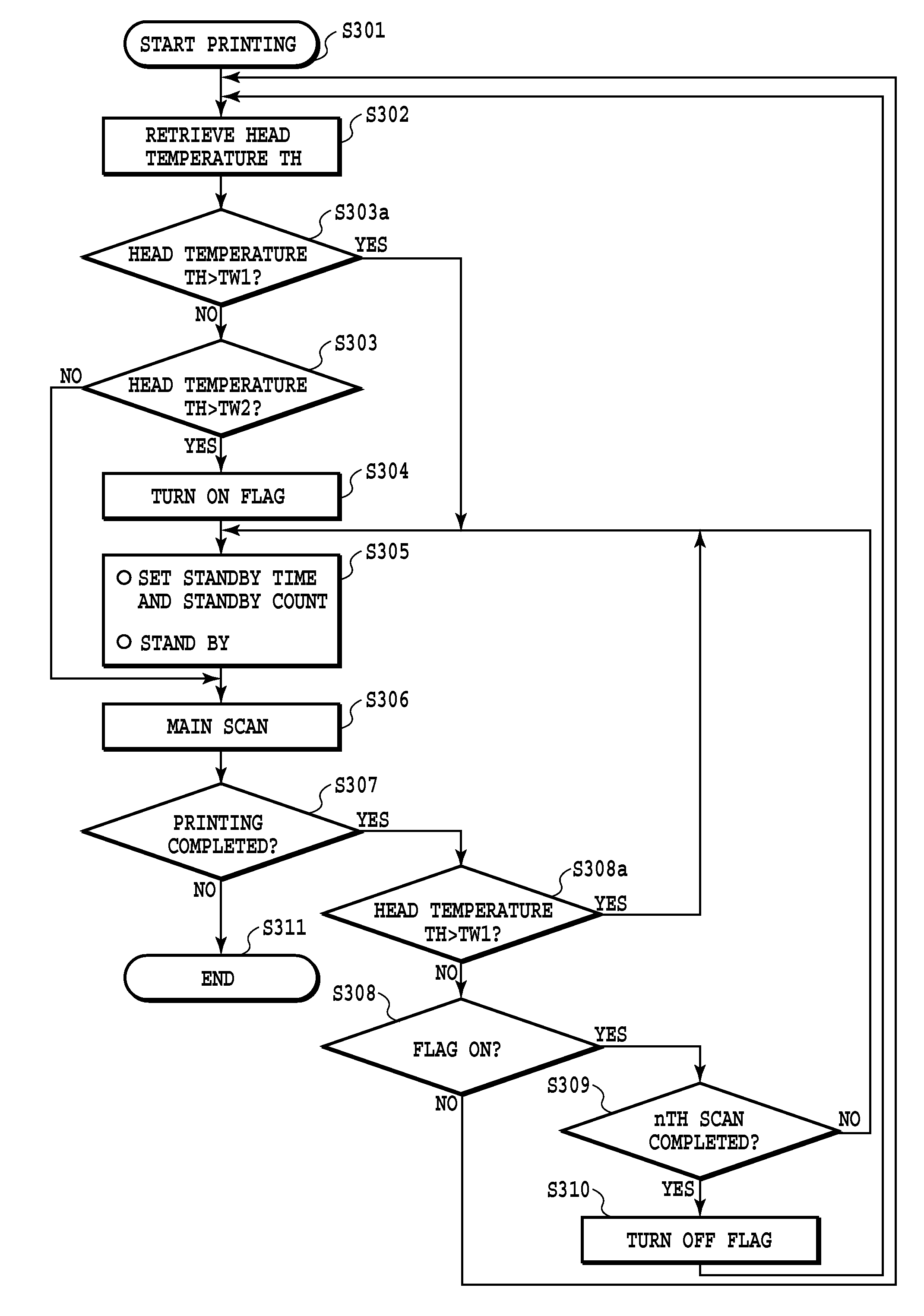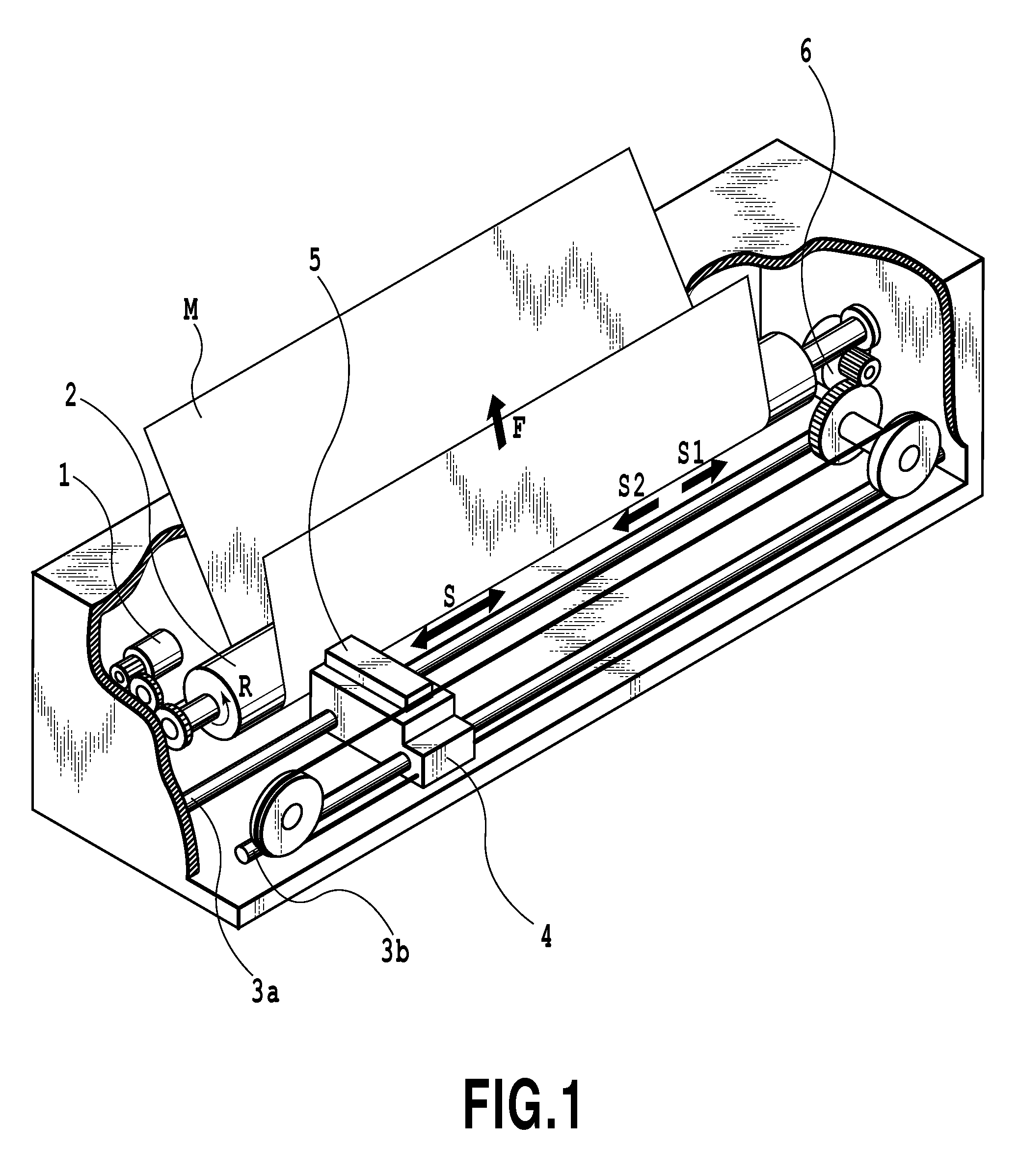Ink jet printing apparatus and ink jet printing method
a printing apparatus and ink jet technology, applied in the field of printing apparatuses, can solve the problems of non-ejection, degrading image quality or damage to the print head, accumulated heat to be accumulated in the print head, etc., and achieve the effect of increasing the temperature of the print head and reducing the possibility of density or hue unevenness
- Summary
- Abstract
- Description
- Claims
- Application Information
AI Technical Summary
Benefits of technology
Problems solved by technology
Method used
Image
Examples
first embodiment
[0032]A preferred embodiment of the present invention will be described below in detail with reference to the drawings. In the specification, the term “printing” includes the formation of meaningful information such as characters or figures on a print medium but also the formation of meaningless information on a print medium. The term “print medium” means not only paper, used in common printing apparatuses, but also a material capable of receiving ink, such as a cloth, a plastic film, a metal plate, glass, ceramics, wood, or leather. The term “ink” should be broadly interpreted similarly to the definition of the term “printing”, and means a material applied onto the print medium to form an image, a pattern, or the like.
[0033]FIG. 1 is a schematic perspective view illustrating an internal mechanism of an ink jet printing apparatus that is applicable to the present embodiment. In FIG. 1, reference numeral 1 denotes a conveying motor. The conveying motor 1 drivingly rotates a platen ro...
second embodiment
[0056]Now, a second embodiment of the present invention will be described.
[0057]The second embodiment is characterized the standby time set for each scan to be subjected to the standby control is changed according to the head temperature TH and the number n of scans to be subjected to the standby control (scan count) The second embodiment is similar to the first embodiment in the other respects. Consequently, an ink jet printing apparatus according to the second embodiment also has the configuration shown in FIGS. 1 and 2.
[0058]FIG. 6 is a diagram showing a table used to set the standby time in the ink jet printing apparatus according to the present embodiment. The ink jet printing apparatus according to the second embodiment can set the amount of standby time until the start of each scan and the number of scans to be subjected to the standby control (set scan count). For example, if the head temperature is between 66° C. and 70° C. (first level), the scan count is controllably set ...
third embodiment
[0068]Now, a third embodiment of the present invention will be described with reference to FIGS. 7 and 8.
[0069]The head temperature may rapidly become high depending on the structure of the print head or the number of ejections from the print head per unit time. In this case, the head temperature may fail to decrease sufficiently or rise when only the standby control is performed in which a short standby time is set for each of a plurality of scans as in the case of the above-described embodiments. If such a phenomenon occurs, the print head may fail to achieve ejection, significantly degrading the image quality. Thus, in the third embodiment, when the temperature of the print head becomes very high, a long standby time (for example, 1 second) is set for a single print scan to rapidly lower the head temperature TH to avoid possible non-ejection. The ink jet printing apparatus according to the third embodiment also has the configuration shown in FIGS. 1 and 2.
[0070]FIG. 7 is a flowch...
PUM
 Login to View More
Login to View More Abstract
Description
Claims
Application Information
 Login to View More
Login to View More - R&D
- Intellectual Property
- Life Sciences
- Materials
- Tech Scout
- Unparalleled Data Quality
- Higher Quality Content
- 60% Fewer Hallucinations
Browse by: Latest US Patents, China's latest patents, Technical Efficacy Thesaurus, Application Domain, Technology Topic, Popular Technical Reports.
© 2025 PatSnap. All rights reserved.Legal|Privacy policy|Modern Slavery Act Transparency Statement|Sitemap|About US| Contact US: help@patsnap.com



